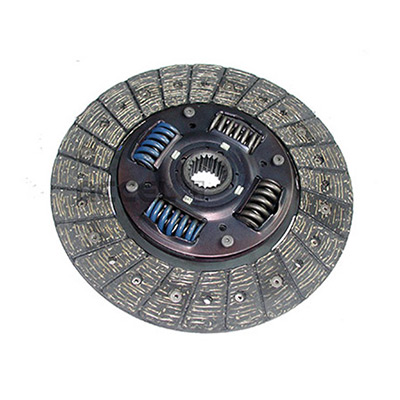- Arabic
- French
- Russian
- Spanish
- Portuguese
- Turkish
- Armenian
- English
- Albanian
- Amharic
- Azerbaijani
- Basque
- Belarusian
- Bengali
- Bosnian
- Bulgarian
- Catalan
- Cebuano
- Corsican
- Croatian
- Czech
- Danish
- Dutch
- Afrikaans
- Esperanto
- Estonian
- Finnish
- Frisian
- Galician
- Georgian
- German
- Greek
- Gujarati
- Haitian Creole
- hausa
- hawaiian
- Hebrew
- Hindi
- Miao
- Hungarian
- Icelandic
- igbo
- Indonesian
- irish
- Italian
- Japanese
- Javanese
- Kannada
- kazakh
- Khmer
- Rwandese
- Korean
- Kurdish
- Kyrgyz
- Lao
- Latin
- Latvian
- Lithuanian
- Luxembourgish
- Macedonian
- Malgashi
- Malay
- Malayalam
- Maltese
- Maori
- Marathi
- Mongolian
- Myanmar
- Nepali
- Norwegian
- Norwegian
- Occitan
- Pashto
- Persian
- Polish
- Punjabi
- Romanian
- Samoan
- Scottish Gaelic
- Serbian
- Sesotho
- Shona
- Sindhi
- Sinhala
- Slovak
- Slovenian
- Somali
- Sundanese
- Swahili
- Swedish
- Tagalog
- Tajik
- Tamil
- Tatar
- Telugu
- Thai
- Turkmen
- Ukrainian
- Urdu
- Uighur
- Uzbek
- Vietnamese
- Welsh
- Bantu
- Yiddish
- Yoruba
- Zulu
Dec . 15, 2024 03:37 Back to list
ribbed conveyor belt
Understanding Ribbed Conveyor Belts
Ribbed conveyor belts, often overlooked in discussions about industrial equipment, play a vital role in various sectors, from manufacturing to food processing. These specialized belts are designed with raised ribs or cleats that run across the surface, enhancing their functionality by improving grip and preventing slippage. This article delves into the features, advantages, applications, and maintenance of ribbed conveyor belts.
Features of Ribbed Conveyor Belts
Ribbed conveyor belts are distinct for their unique surface texture. The ribs, which can be made from various materials including rubber, PVC, or polyurethane, are strategically placed to provide additional friction and support loads that require a stable, secure movement. The design facilitates efficient handling of products that might otherwise slide or roll off standard flat belts. Additionally, ribbed belts are often constructed to withstand a range of temperatures and environmental conditions, making them versatile for different industrial applications.
Advantages of Ribbed Conveyor Belts
One of the primary advantages of ribbed conveyor belts is their enhanced traction. The ribs create a superior grip on the transported materials, reducing the likelihood of slippage, especially when conveying items at an incline. This feature not only increases operational efficiency but also minimizes product loss or damage, which can occur with standard belts.
Another significant benefit is their ability to handle a wide variety of materials. From bulk products to packaged goods, ribbed conveyor belts can accommodate everything from light, delicate items to heavy, robust materials. This adaptability makes them a popular choice in industries such as food processing, packaging, agriculture, and automotive manufacturing.
Furthermore, the design of ribbed conveyor belts simplifies the movement of products through different phases of processing
. They can easily be integrated into existing conveyor systems, upgrading older models to meet contemporary demands for speed and reliability.Applications of Ribbed Conveyor Belts
ribbed conveyor belt

Ribbed conveyor belts find applications in numerous sectors. In the food industry, for example, they are frequently used for transporting fruits, vegetables, and packaged goods. The raised ribs ensure that items do not slide off the belt, crucial in environments where hygiene and safety are paramount.
In manufacturing and assembly lines, ribbed belts can move parts and products through various stages of production. Their grip and stability facilitate the efficient handling of items, even in high-speed scenarios, contributing to overall productivity.
Additionally, ribbed conveyor belts are increasingly utilized in logistics and warehousing. They enable the smooth transfer of goods from one location to another, whether in bulk storage or during distribution. Their robustness ensures they can withstand the rigors of continuous use, making them a reliable choice for businesses focused on efficiency.
Maintenance of Ribbed Conveyor Belts
To ensure longevity and optimal performance, regular maintenance of ribbed conveyor belts is essential. This includes monitoring for wear and tear, as well as checking the tension and alignment of the belts. Routine cleaning is also crucial, especially in food processing applications, to prevent contamination.
Additionally, operators should be vigilant about the load capacities and avoid overloading the belts. Understanding the limits of the conveyor system will help maintain safety and efficiency while extending the life of the belts.
Conclusion
Ribbed conveyor belts may not be the most visible components of an industrial setup, but their importance cannot be overstated. Offering enhanced traction, versatility, and efficiency, they are critical in ensuring smooth operations across various sectors. With proper maintenance and care, ribbed conveyor belts can serve as a long-term solution for material handling challenges, making them a wise investment for businesses looking to optimize their processes.
-
Korean Auto Parts Timing Belt 24312-37500 For Hyundai/Kia
NewsMar.07,2025
-
7PK2300 90916-T2024 RIBBED BELT POLY V BELT PK BELT
NewsMar.07,2025
-
Chinese Auto Belt Factory 310-2M-22 For BMW/Mercedes-Benz
NewsMar.07,2025
-
Chinese Auto Belt Factory 310-2M-22 For BMW/Mercedes-Benz
NewsMar.07,2025
-
90916-02660 PK Belt 6PK1680 For Toyota
NewsMar.07,2025
-
drive belt serpentine belt
NewsMar.07,2025

